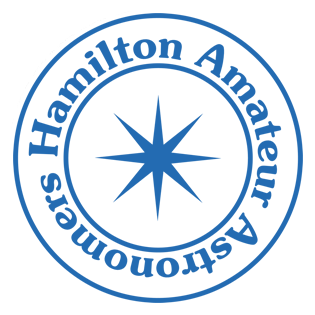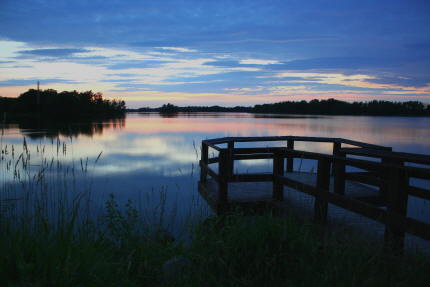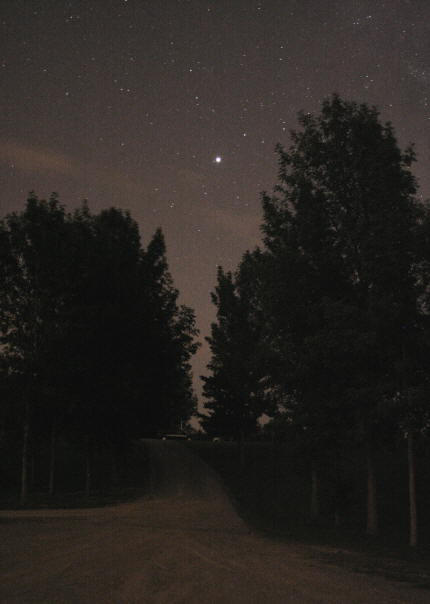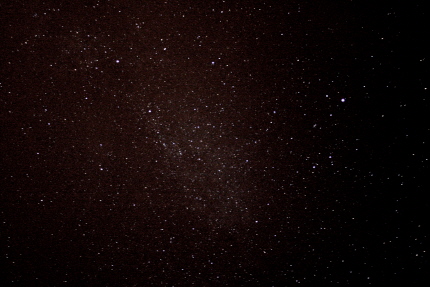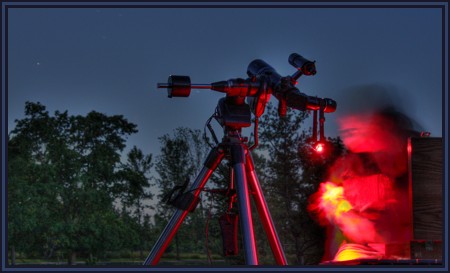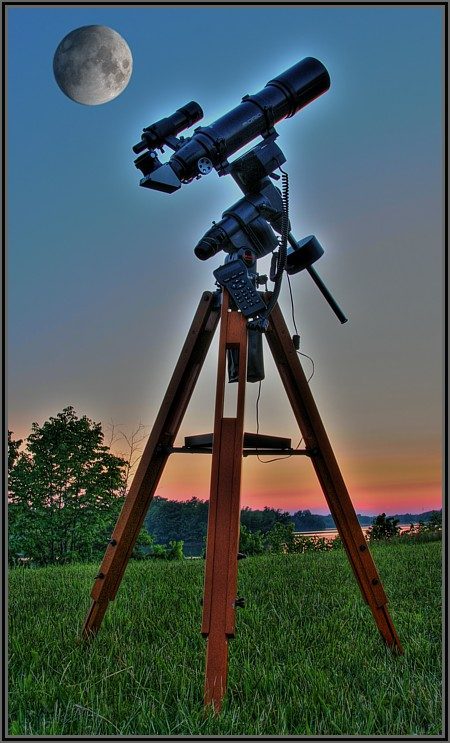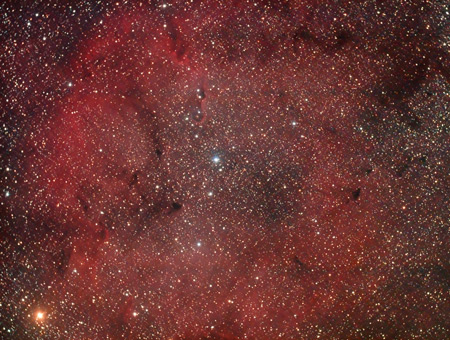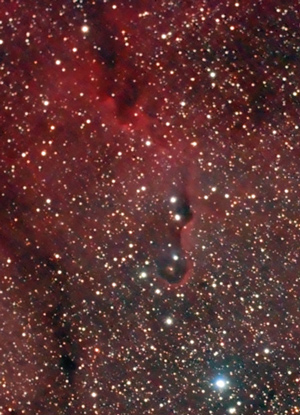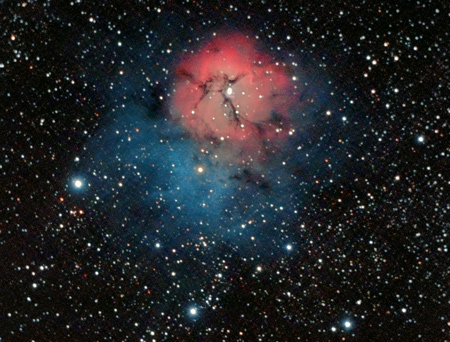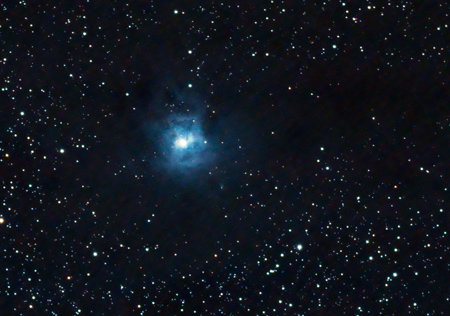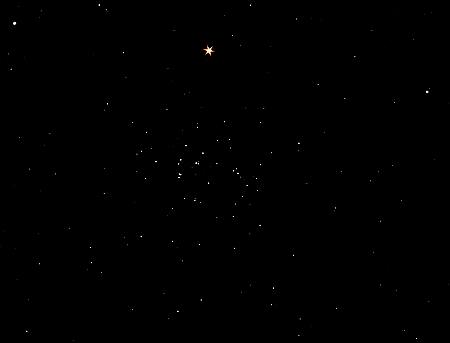I arrived on Sunday evening at Binbrook before 8PM, hoping to be set up and able to scout out M68, the next item in my Sequential Messier Marathon. Here’s a picture of my team, in a huddle before the action began.
Ed had his ED80 on a tripod, and was watching for the first sign of polaris to get it aligned. I set up the GWS on the hill, after trying to estimate whether there was more horizon from there or from the newly made, excellent boardwalk beside the parking lot at the bottom of the hill.
I snapped some nice sunset pictures, as i waited for darkness. Ann arrived with Alex and Shaune, and proceeded to set up binoculars, and lent me a copy of Uranometria with all the stars i need to get there.
I had my excellent Flying toy saucer again, and it was again a big hit. It flies so high, it’s like scary to think the wind is blowing it out over the lake, so i turn off the power and watch it come falling out of the sky, only to land with a 50m of dry land to spare. It makes an excellent photograph to do a time exposure as it ascends, because of the LEDs on its sides, spinning around. Here’s a picture Kerry took on Friday evening.
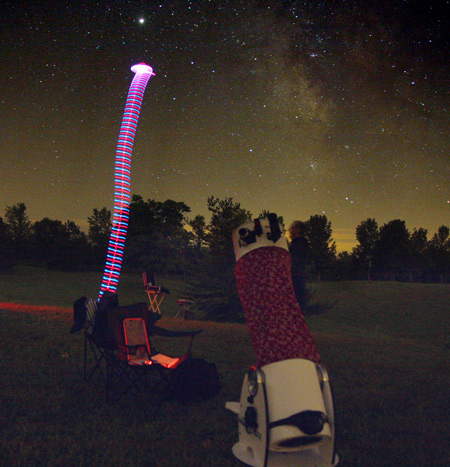
A timed exposure of a luminous object can be impressive indeed
I had also used Cartes du Ciel to print out star charts with stars to 10th magnitude, to get from Corvus to M68. For reference, i also printed enough stars to navigate within Corvus, as practice.
As the sun got lower below the horizon, astronomical twilight started to end and more stars became visible. I strained to navigate the GWS along my designated star hopping path. It turned out that due to the residual sky-glow and extinction, my star chart had way more stars than the sky, and those in the sky were farther apart than the size of my finderscope, making star hopping a practical impossibility.
I guess an industrial approach would be to have a set of star charts printed with different limiting magnitudes. Use of a laptop computer to generate the charts onthe fly would be another option, at risk of losing night vision in the process. It turned out that the limiting magnitude through the GWS was about 8, and that meant that seeing M68 was going to be problematic. Atmospheric extinction at low altitudes of view really swamps the star field.
At about 10:22 M68 set, as viewed from ED’s goto… i mean the location in the sky where M68 is was below the tree line. At the last minute i decided to try an astrophoto of the area to see if i could stretch something out of it. It turned out that at the bottom of the hill, the horizon is slightly lower.
After M68 had safely set, i fished up the chart for the ‘Footprint Nebula’ and started to star hop from Alberio towards it. Now, instead of too few stars, i had too many. The GWS was showing about 2000 stars in a field where the chart had about 50. Jackie and i painstakingly made our way towards it, and got there in a few minutes. I am certain the star field was correct. I made a sketch of the stars i could see and all were on my map. Unfortunately, even with a nebula filter, no nebulosity was seen.
By then, it was approximately midnight. For an experiment, i slewed the GWS (actually rather quick since it’s a dob) down to the spot on the horizon where previously i had been looking for M68, to see if later at night, more stars are visible at low altitude. Even the mighty GWS could only see one star at the top edge of the trees, a far cry from the 2000 in cygnus. So my conclusion is that extinction is real and real nasty.
But not forever, in the case of M68. In early December, it will be a morning object, and i will be out looking for it then. In the meantime, i will be doing Astrophotography, sharpening my star hopping skills, studying some books and participating in the many public events the HAA has planned for the summer and fall.
Many sincere thanks to Jackie, who took my quest as seriously as i do, (or maybe even more so) Ann, and Ed, for being there with me as i tried for the impossible dream.
Steve
Aka Don Quixote searching up new windmills….
